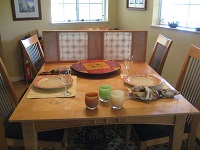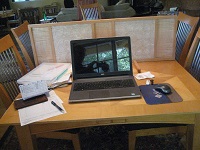Newsletter May 2021
President's Message
My first exposure to woodworking was in school when I was 11 years old.
In the 3rd year, when I was 13, I made a simple Maple table (it was called Chestnut in my school days) Nothing exceptional.
I decided what I wanted to make and the teacher walked into his store room and retrieved a plank of Chestnut about 6 ft tall. I cut off what I needed for my table top and shelf and went to work. Later he gave me the invoice for the wood to give to my mother. I do not remember the price but it must only have been a few shillings otherwise my mother would have complained.
The table top was 24 in. square.
24 in. wide planks are not that available today and certainly not that cheap.
Until fairly recent times we have all assumed wood, (with the exception of protected, precious hardwoods such as Rosewood, etc.) was always going to be available.
We have adjusted to using sustainably grown wood which tends to not to be available in wide planks. It also tends to have more defects, ie: knots. Until a few years ago I hqed never made a piece of furniture with knots showing on it, now I think every piece I have built over the last few years has had knots which I have filled with epoxy to convert into features.
But over this last year even sustainable wood is getting harder to find and the price is going up.
In the middle of last year I made a piece of furniture with Alder.
I found enough wide pieces to build it, all be it with the visible knots. Since then I have built two other pieces with Alder but I was not able to find wide pieces and the knots were more than I really wanted.
There is an article in May 17th issue of Bloomberg Businessweek that starts with "Wood's becoming a precious commodity"
It appears the current reasons are a mixture of the pandemic, supply chain interruptions and mills closed for lack of operators (some had been laid off) plus the housing boom.
Mills are focusing on construction lumber as the price has skyrocketed so it is more profitable than cutting other timbers.
The climate change is also having an effect.
Even the guitar industry is having wood shortages as flooding and a wood-boring beetle threaten supplies of "swamp ash" used for lighter guitar bodies.
guitarworld,com.com
Enjoy your Woodworking
Frank
(Contact at:
Frankramsay8@aol.com
Top
Pre-Meeting
Before the meeting started we discussed how we might meet outdoors for our next meeting. Paul Krenitsky suggested a potluck.
We also discussed when we return to in-person meetings also having the meeting on ZOOM. Bruce suggested we get two projectors, one for the presentation and one to point to the members in attendance. This would benefit our out of town Zoom members and guests. (more information on our plans will be available shortly)
May 2021 BAWA Zoom Meeting
The meeting was called to order by President Frank Ramsay.
Announcements:
Guest: Paul Schurch, master furniture maker and teacher:
Paul will be our Guest Speaker at our next meeting on June 20th.
schurchwoodwork.com
We had 37 people join us in this Zoom session.
I use my Delta 6" belt/disc sander for rounding all the edges on my little 2x4 model airplanes I have been making for the past four years. I use the belt for removing bandsaw marks. The disc can make nice right angle edges. The belt is better for larger flat surfaces. I use it for my flying radio control airplanes too.
Here's another one of my sanding tools, used in my drill press. I use this for inside curves. The belt/disc sander will not get into the smaller radius curves. Again, this was handy when I was making the 2x4 model airplanes.
Bill Henzel
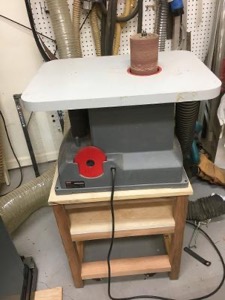

Jamie Buxton

Bruce Powell

"My belt sander setup"
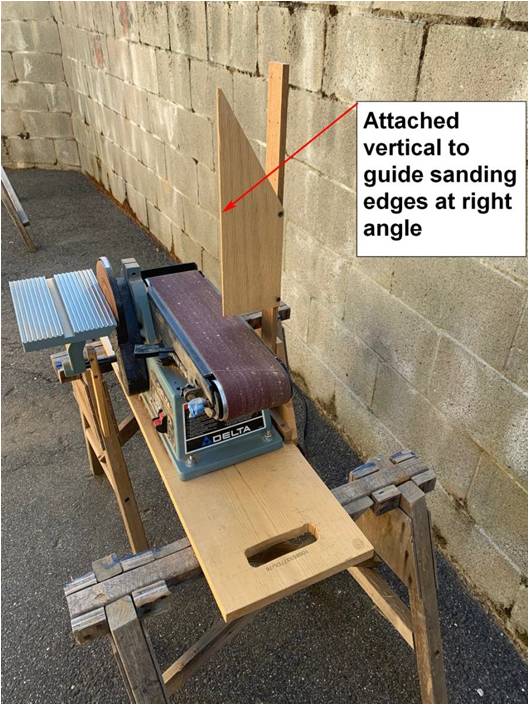
"Sander with vertical guide"
I have abandoned an elaborate jig-guided router setup in favor of a plain old belt sander
Jon Kaplan
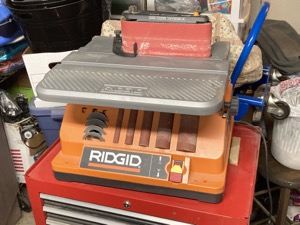

Ridgid combination oscillating spindle and belt sander
I use this all the time, but rarely in spindle sanding mode
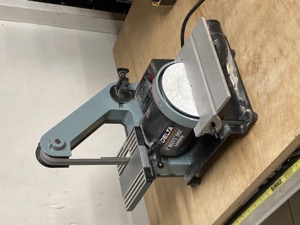
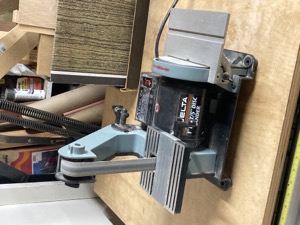
Delta 1" belt and 5" disc sander
This is a "stationary" sander that spends most of its life stored in a box.
I use it extensively for sanding gear teeth when I'm making a clock, but
otherwise it sees very little use.
I've never used the disc sander.
Dennis Yamamoto
Woodmaster 26" drum sander, single phase 5 HP
Summary
Belt sanders seem to be preferred over disc sanders.
A question was raised about using open-ended belt sanders, such as Supermax, or Jet. Those who have used them have had problems getting their open-ended drum sanders to align properly - they said that sanded pieces come out with a slight taper. Sanding veneers can be done by taping the veneer to a board before running it through the drum sander,
Top
Featured Speaker
Mike Bray
Spoon Carving and more
Mike Bray gave a talk about his shop in Oakland and some of his work:
Mike Bray gave a talk about his shop in Oakland and some of his work:
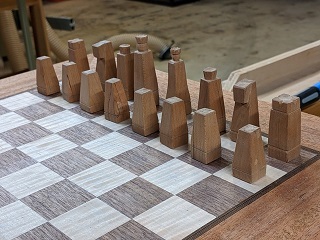
Chess set with carved crowns and miters
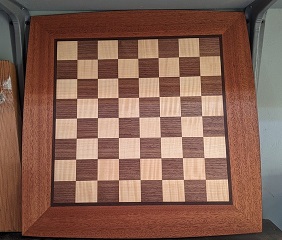
Chess board
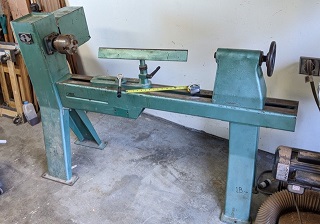
Mike's Big lathe

Miniture veneering work from a class at Woodcraft
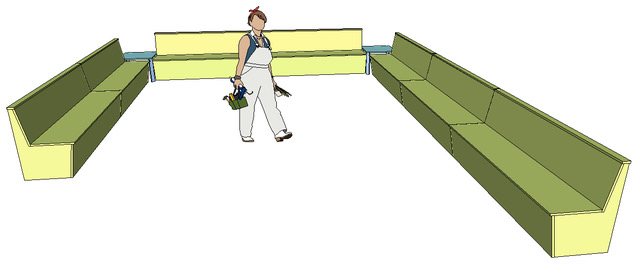
Appleply project
Mike admitted that he was lucky to get into the shop where he agreed to manage the shop in exchange for reduced rent. The shop already had many desirable woodworking machines in it, and some metal working machines as well. He promised we could visit the shop in the future. Meanwhile, he is working on a job making bench seating using pre-finished Appleply plywood.
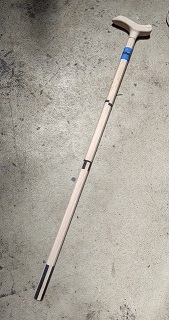
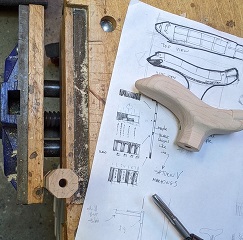
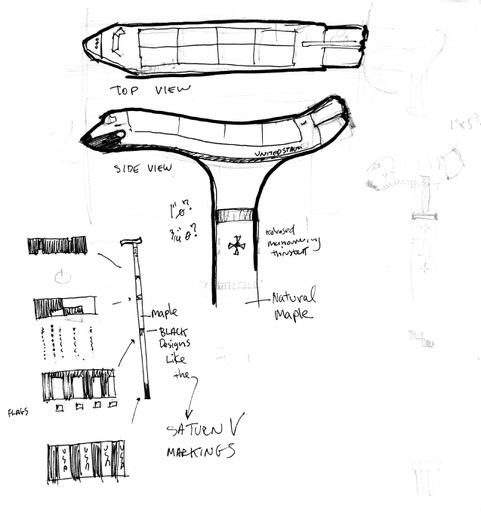
He also showed us the walking cane he is making. It has a space shuttle handle and a Saturn rocket paint scheme on the shaft.
His main topic of discussion was about spoon carving. Mike said that on rare occasions he will make a laminated spoon and Titebond II is his adhesive choice. Most often, he carves from solid pieces of wood. Green wood is easier to carve than dry wood. He will often dip dry wood into water to soften it up and make it easier to carve.
He mentioned that he has an Instagram account with carving techniques on it.
He is a member of Bay Area Spoon Carvers. He mentioned that he posted a YouTube video of how to sharpen a curved carving knife. He makes his own leather strops and uses white or green buffing compound on them. He primarily uses two main carving knives: the Morakniv #120 straight knife and the #164 hooked knife. He also mentioned the Robin Wood Spoon Knife.
He is a member of Rise Up and Carve - a virtual spoon carving group that uses Zoom for group carving sessions early in the morning!. If you go to the Rise Up and Carve website:
riseupandcarve.com,
You can find one of his spoon carving templates to download. Look under SPOON CHALLENGE, find #8. If you are a purist, you would not use sand paper to finish your spoon, you would do the whole thing with knives.
Mike said that he has the Bay Area Spoon Carvers meet once a month at his house for a spoon carving get together.
He teaches at the Randall Museum in SF and has been teaching there for 17 years.
Top
Show and Tell
Bruce Powell
Making curved-side wine glass tables
Making curved-side wine glass tables
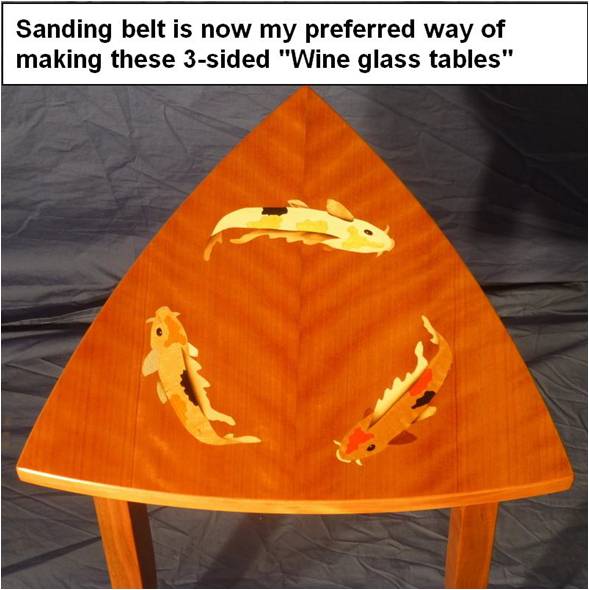
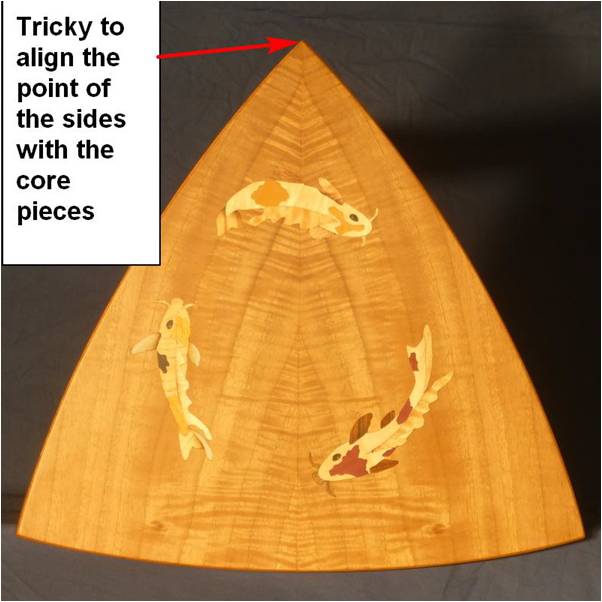
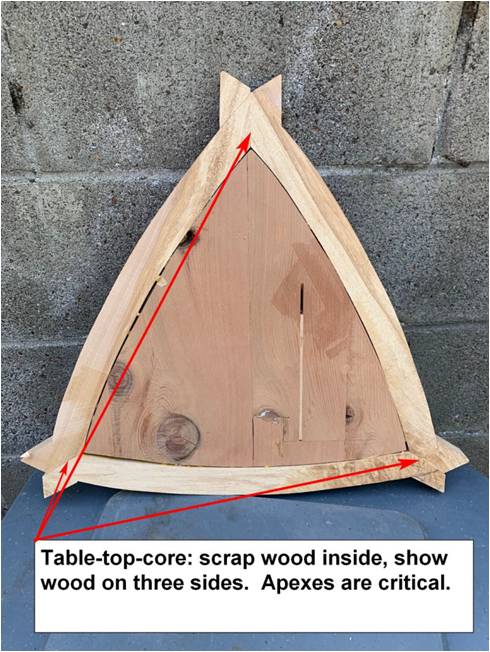
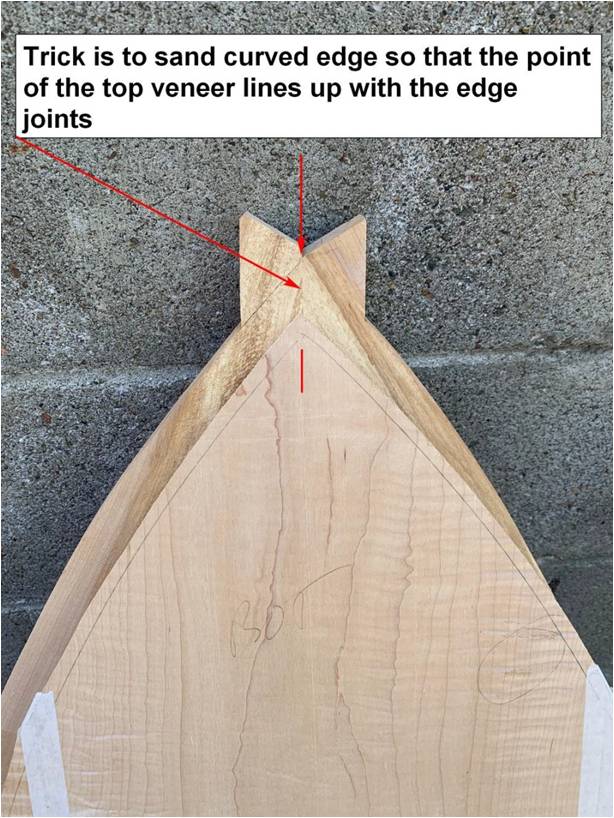
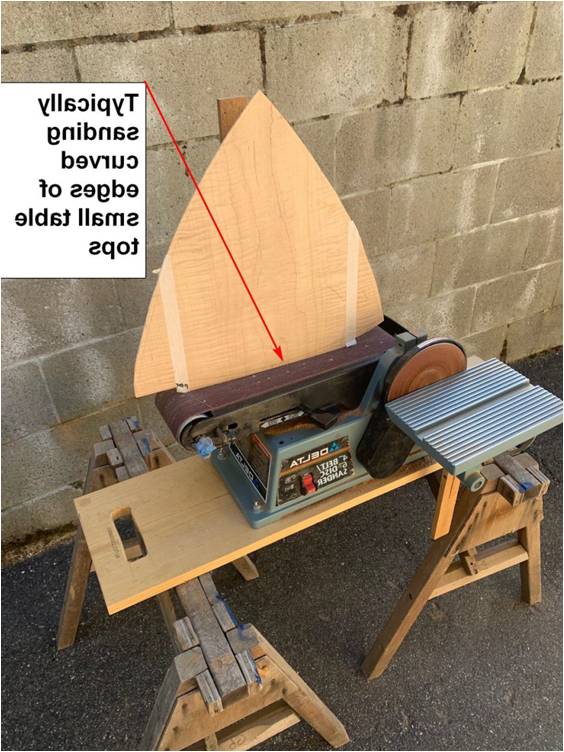
Bruce uses his Delta belt/disc sander to sand the edges.
He made a fence to keep the wood perpendicular to the sanding belt.
Using a smooth rocking motion,3 passes in one direction
and 3 in opposite,I can align points.
(In reflecton it says
"Typically sanding curvesd edges of small table top)
Lloyd Worthington-Levy
Contemporary Chair (Michael Fortune design)
Contemporary Chair (Michael Fortune design)
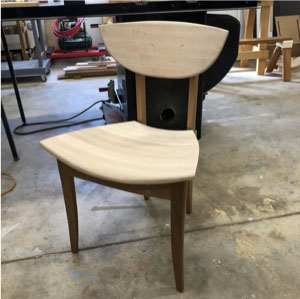
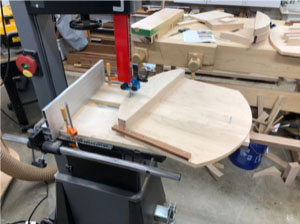


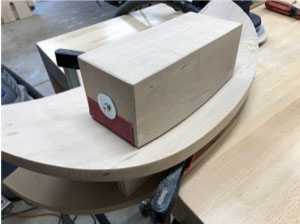
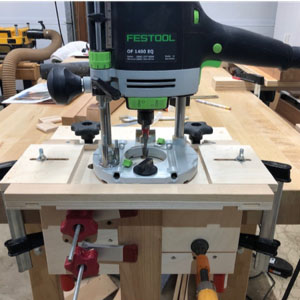
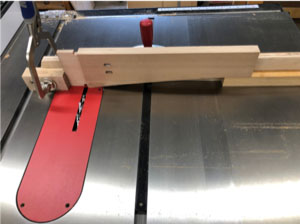
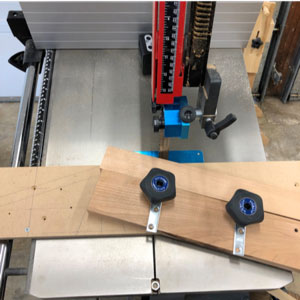
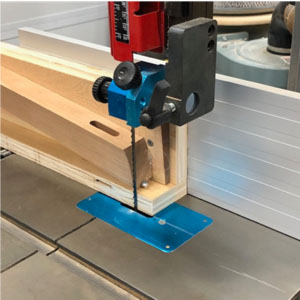
Lloyd made two Maple and Cherry chairs with curved surfaces requiring jigs for cutting the back and seat.
Dennis Yamamoto
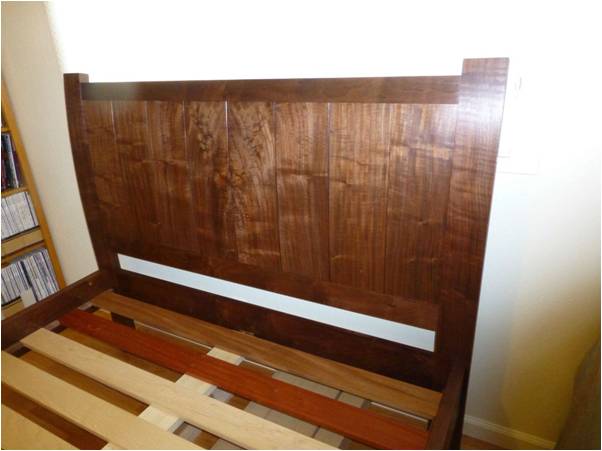
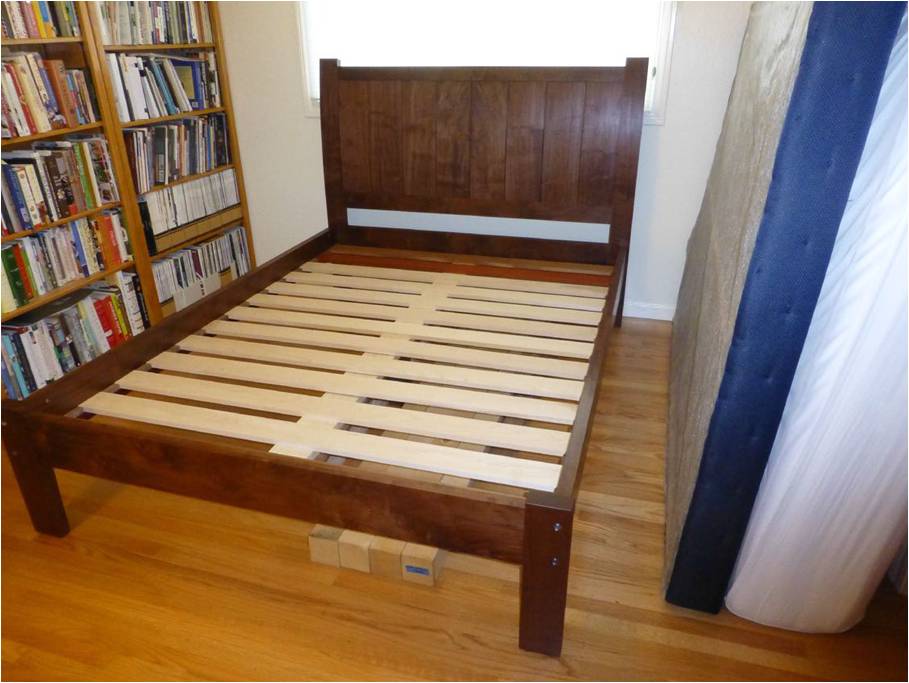
Dennis showed off his Queen Walnut bed.
The headboard is made from bent laminated walnut.
He used wipe on poly for the finish.
Frank Ramsay
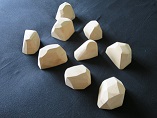
Frank made some rock shaped wood pieces for a client who will paint them for an art project.
They are made from Alder.
They started out as 4x5" pieces and the many random facets were cut on the chopsaw.
Tom Gaston
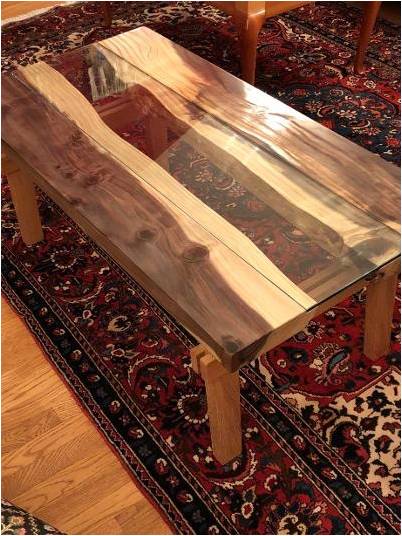
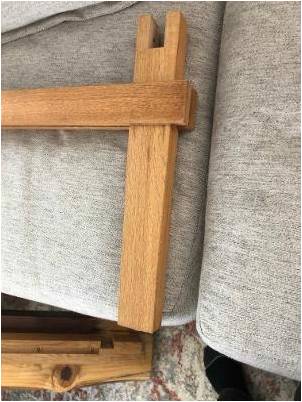
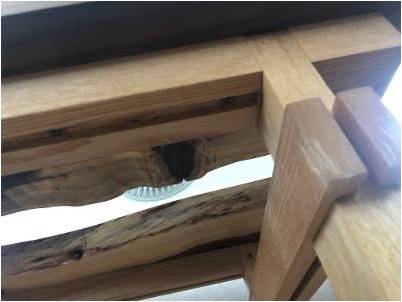
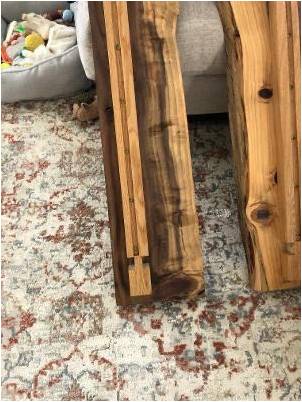
Tom showed off his river table that has no glue joints so it can be knocked down for transport. The top was made from redwood with a found tempered glass center piece.
Bruce Powell

A Kumiko panel in the divider

Source of Kumiko panels
